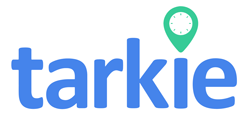Ever thought about how much time and money your business could save with automated salary computation? Many firms still use old payroll methods, risking fines and errors. By using salary automation, businesses can work more efficiently, accurately, and legally, making employees happier.
In the Philippines, small businesses need automated payroll systems more than ever. Automation makes payroll management better and cuts down on mistakes from old methods. For example, using payroll best practices can lower compliance and error rates by 30%. This is crucial, given the penalties for payroll mistakes.
Top providers like AAA offer smart payroll solutions. These can change your payroll, cut costs, and make employees feel valued. Let’s look at the best ways to automate salary computation in your business.
Key Takeaways
- Automating payroll processes can drastically cut down processing times and reduce errors.
- Businesses that implement payroll best practices can expect up to a 30% decrease in compliance issues.
- Automation can help mitigate financial risks associated with delayed salary payments.
- Utilizing a sophisticated payroll management tool can lead to significant cost savings over time.
- Regular audits and accurate data management are essential for successful payroll automation.
- Adopting an automated payroll system is critical for SMEs in the Philippines to ensure compliance with local labor laws.
Understanding Automated Salary Computation
Automated salary computation is a big step forward for businesses. It uses software to quickly figure out employee wages and handle deductions. This method also makes sure companies follow tax laws.
Switching to automated payroll helps avoid mistakes and keeps data safe. This is key as laws change and companies grow.
Small and medium enterprises (SMEs) in the Philippines really benefit from this. They can easily manage employee payments and track benefits. Direct deposit makes it simple for employees to get their pay on time.
Automating payroll also cuts down on work for payroll teams. Studies show it saves 3 to 5 hours a week. This lets HR teams work on growth strategies instead of paperwork.
As companies grow and hire globally, they need payroll tools that work worldwide. A global payroll platform helps manage teams in over 90 countries. It makes sure payments are on time and keeps everyone happy.
In short, knowing how automated salary computation works is key. It helps businesses pick the right tools for their needs. The right tools can make a big difference in how well a company runs and how happy its employees are.
Benefits of Salary Automation for Your Business
Using pay automation technology makes your business’s payroll much more efficient. Automated systems can calculate and pay salaries in seconds. This saves a lot of time and money, cutting costs by 20-30%.
With a good payroll software solution, you’ll see fewer mistakes. Automated systems can cut error rates by up to 90%. This means less time spent fixing mistakes and more time on important tasks.
Automation also makes your team more productive. Tasks get done faster, boosting output by 15-25%. You can make decisions quicker, thanks to real-time reports. This helps you stay on top of your finances and make smart choices.
Automated payroll systems also help you follow the rules better. You’ll see a 40% drop in fines for not following rules. This keeps your records accurate and avoids penalties.
Happy employees are key to a successful business. Over 70% of small companies see better employee satisfaction with automated payroll. Employees love getting their pay on time and can easily check their pay slips online. This builds trust and transparency in the workplace.

Choosing the Right Payroll Software Solution
For SMEs in the Philippines, picking the right payroll software is key. It makes salary automation smoother and boosts efficiency. The right features are crucial to meet your business needs.
Considerations for SMEs in the Philippines
Key things to think about include:
- Multi-currency support for local and international deals.
- Tax compliance tools to follow local laws and cut down errors.
- Integration with HR systems for easier payroll management.
- Easy-to-use software to help teams work better together.
Tools like Gusto and QuickBooks Payroll are top choices. They offer strong payroll tools for small businesses. They handle taxes automatically and provide detailed reports.
Checking the reliability of customer support is also important. Good support can quickly solve problems, letting businesses focus on their main tasks. It’s also key to choose software that can grow with your business, handling up to 50% more employees.
Choosing payroll software can save time and make employees happier. Self-service options can cut HR and payroll work by 30%. With the right tools, businesses can work more efficiently, make better decisions, and grow in the competitive Philippines market. For more on software solutions, check this link.
Payroll Best Practices for Effective Implementation
It’s crucial to follow payroll best practices for accurate salary processing and to stay compliant. An automated payroll system works best when you gather data carefully and educate employees well.
Gathering Employee Data and Information
Starting with payroll best practices means collecting the right employee data. You need names, addresses, tax IDs, and salary info. Use secure systems to protect this data and keep it accurate.
Regular checks on this data help avoid IRS and Department of Labor problems. These issues can happen if employees are misclassified.
Regular Training and Staff Onboarding
For salary automation to succeed, training and onboarding are key. Employees need to know how to use the automated system well. Studies show that training leads to better compliance and accuracy in payroll.
Regular feedback from employees helps spot and fix any issues. This makes the payroll process more efficient.

Integration of Payroll Systems with HR Software
Integrating payroll systems with HR software makes things more efficient. It allows for quick updates on things like attendance and pay. This means payroll is accurate and on time, which is good for employees.
Statistics show 82% of companies have payroll errors. This can make employees unhappy. But, using an automated system can help a lot.
Using payroll tools with HR software helps businesses work better. This is because they can save 30% on costs and use their resources better.
Tools like Paychex Flex and ADP Run are great examples. They keep employee data up to date. Companies using these tools are 57% happier with their employees.
By 2025, over 70% of small and medium businesses will use these tools. This will make payroll management better.
Also, linking time management with payroll software makes pay accurate. This cuts down on errors, since 80% of manual timesheets are wrong. Automating payroll and HR lets businesses focus on important tasks.
Good integration leads to happier employees and smoother operations. It’s all about making things work better together.
Managing Compliance and Regulatory Requirements
Keeping up with regulatory requirements is key for businesses handling payroll. It’s important to stay current with labor laws and tax rules in the Philippines. Automated payroll systems help with this, making sure everything is in line with new policies.
Using the best practices in payroll helps avoid compliance problems. Regular checks on payroll can catch any issues early. This way, companies can fix problems before facing penalties.
Even with challenges, using automation can bring big benefits. It cuts down on mistakes, makes payroll faster, and ensures taxes are correct. This not only helps with following rules but also saves money for growth.

Training payroll staff on laws is vital for staying compliant. Employees who know the rules can avoid costly errors. A clear plan for checking compliance helps small and medium businesses succeed in today’s market.
Monitoring and Analyzing Payroll Performance
Monitoring and analyzing payroll performance is key to improving business efficiency. Payroll is a big part of a company’s costs, often 50 to 70%. Knowing this can help companies improve their processes and get accurate reports.
Finding payroll errors is important. These mistakes can cause financial losses. Using an automated payroll system helps reduce these errors. It makes processes smoother and ensures rules are followed.
Businesses should track important metrics to improve payroll. This includes:
- Time taken to resolve errors
- Number of payments processed within set timeframes
- Employee absenteeism patterns
Payroll analytics help HR and finance make better decisions. By analyzing past data, companies can plan for the future. They can also adjust pay to fit their needs.
Setting clear goals is important for growth. Companies can check how well they keep employees by looking at payroll data. Finding and fixing pay issues helps everyone get what they deserve.
Modern payroll software offers tools for better reporting and analytics. This helps businesses work more efficiently. With good data and regular checks, companies can improve their payroll systems.
Exploring Payroll Optimization Strategies
Payroll is often the biggest expense for companies. It’s key to use smart strategies to manage it well. This means making data entry better and checking employee classifications for tax accuracy. Also, tracking data in real-time helps make better decisions, supporting salary automation.
Using the right payroll tools can cut down on unnecessary work. This lets companies focus on important tasks. For example, using payroll systems with time tracking can save up to 50% of time.

Getting wages right involves looking at base salary, bonuses, and variable pay. These can change based on how well the company does. By handling these well, businesses can stay competitive and keep costs under control.
Also, having a culture of accuracy in payroll can greatly reduce mistakes. This makes employees happier and more productive. Studies show that training in payroll compliance can cut penalties by up to 70%. This focus on accuracy builds trust and boosts business performance.
Salary Automation, Business Implementation, Payroll Best Practices
Implementing an automated payroll system requires careful planning and following best practices. Companies in the Philippines can benefit a lot by choosing the right payroll software. This can cut payroll processing time by up to 80%, making HR work more efficient.
Automated systems can also reduce payroll errors by up to 90%. This makes data management more accurate. It helps streamline operations and improves financial accountability. Using direct deposit for payments can make employees 75% happier, showing how reliable these systems are.
Training is key when using automated payroll systems. Companies that train well can adopt new software 40% faster than others. This shows the value of good onboarding and training, which can save 30% in costs. Training that involves managers is preferred by 65% of employees, making them more familiar with new systems.
Following best payroll practices helps companies meet tax regulations easily. 56% of businesses use these systems mainly for this reason. Automated processes can achieve 100% accuracy, reducing risks from manual errors and complex compliance.
Conclusion
Salary automation in Philippine SMEs makes payroll easier and more accurate. It boosts compliance and employee happiness. Advanced payroll software helps with tax calculations and employee types.
This reduces the chance of payroll mistakes. Mistakes can lead to wrong payments to employees. It also makes the workplace better.
It’s key to follow best practices when starting payroll automation. This means training staff, doing audits, and keeping accurate records. A good payroll system lets businesses focus on their main tasks.
By using salary automation, Philippine SMEs can grow and do better. They can save money quickly and set up for success in payroll. This leads to happier and more productive workplaces.
